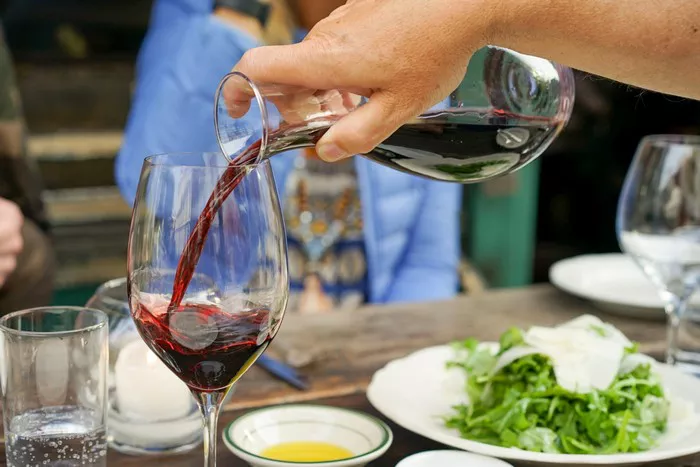Sauvignon Blanc, a renowned white wine cherished for its crispness and refreshing taste, has gained popularity among wine enthusiasts globally. Beyond its delightful flavor profile, individuals often inquire about the caloric content of this wine variety. Understanding the caloric value of Sauvignon Blanc is crucial for those concerned with their dietary intake or seeking to make informed choices about their alcohol consumption. In this comprehensive guide, we delve into the intricate details of the caloric content of Sauvignon Blanc, shedding light on its nutritional aspects and providing valuable insights into its impact on overall health.
Calories in Sauvignon Blanc: Unveiling the Nutritional Profile
When contemplating the calorie count of Sauvignon Blanc, it is essential to recognize that the caloric content of wine, in general, is influenced by multiple factors. Sauvignon Blanc is typically considered a dry white wine, and its calorie content primarily stems from its alcohol and sugar content.
A standard 5-fluid ounce (148 ml) serving of Sauvignon Blanc contains approximately 120 calories. However, this calorie count may slightly vary depending on the specific brand, winemaking techniques, and alcohol by volume (ABV) percentage. Wines with higher alcohol content generally contain more calories. Additionally, if the winemaker opts for residual sugar in the wine-making process, it can contribute to a higher caloric value.
Understanding Alcohol Content and Calories in Sauvignon Blanc
Alcohol content significantly impacts the caloric density of Sauvignon Blanc. On average, a 5-fluid ounce serving of Sauvignon Blanc with an ABV of around 12% to 13% contains approximately 120 to 130 calories. However, Sauvignon Blanc with a higher ABV, such as those reaching 14% or more, may possess a calorie count closer to 130 to 140 calories per serving.
The correlation between alcohol content and calories is crucial to comprehend. Alcohol itself is energy-dense, containing approximately 7 calories per gram, compared to carbohydrates and proteins, which contain 4 calories per gram each. Consequently, wines with higher alcohol content will naturally have more calories, contributing to variations in the caloric content of Sauvignon Blanc.
Factors Influencing Caloric Content Beyond Alcohol
Apart from alcohol, residual sugar, though minimal in most Sauvignon Blanc varieties, can also contribute to the calorie count. Wines with residual sugar tend to possess slightly more calories than their drier counterparts. However, Sauvignon Blanc is generally crafted to be a dry wine, thus containing minimal residual sugar and subsequently fewer calories compared to sweeter wine varieties.
Moreover, winemaking practices and regional differences in grape cultivation can affect the final calorie count of Sauvignon Blanc. Various techniques in fermentation, aging, and blending employed by winemakers may have subtle impacts on the overall nutritional profile of the wine.
Impact on Health and Dietary Considerations
Understanding the calorie content of Sauvignon Blanc is imperative for individuals mindful of their dietary intake and those seeking to maintain a balanced lifestyle. Moderate consumption of wine, including Sauvignon Blanc, has been associated with certain health benefits, including potential cardiovascular advantages attributed to antioxidants like resveratrol found in grape skins.
However, it is crucial to note that excessive alcohol intake can have adverse effects on health. While Sauvignon Blanc may offer certain health benefits in moderation, excessive consumption can lead to increased calorie intake, weight gain, and potential health risks such as liver disease, high blood pressure, and an elevated risk of certain cancers.
Making Informed Choices: Tips for Consumption
For those concerned about calorie intake, there are strategies to enjoy Sauvignon Blanc while being mindful of calories. Opting for smaller serving sizes, such as a 4-ounce pour instead of a standard 5-ounce serving, can reduce calorie intake without sacrificing the pleasure of enjoying a glass of wine.
Additionally, selecting lower alcohol content Sauvignon Blanc varieties can help moderate calorie consumption. Wines with lower ABV percentages generally contain fewer calories. Exploring different brands and labels to find wines with slightly lower alcohol content without compromising taste can be a worthwhile endeavor for calorie-conscious individuals.
Pairing Sauvignon Blanc with meals high in protein and fiber can also help moderate its impact on blood sugar levels and overall caloric intake. Choosing lean proteins, fresh vegetables, and whole grains can complement the wine’s flavors while balancing the meal’s nutritional composition.
Conclusion
In conclusion, understanding the caloric content of Sauvignon Blanc is essential for individuals seeking to make informed choices about their dietary intake and alcohol consumption. While a standard serving of Sauvignon Blanc contains approximately 120 calories, variations in alcohol content, residual sugar, and winemaking techniques can influence its caloric density.
Moderate consumption of Sauvignon Blanc, like other wines, can be part of a balanced lifestyle, offering potential health benefits when enjoyed responsibly. However, it is crucial to maintain moderation and be mindful of overall calorie intake to avoid potential health risks associated with excessive alcohol consumption.
By comprehending the nutritional aspects and considering consumption in moderation, individuals can savor the delightful flavors of Sauvignon Blanc while aligning with their health and dietary goals.


